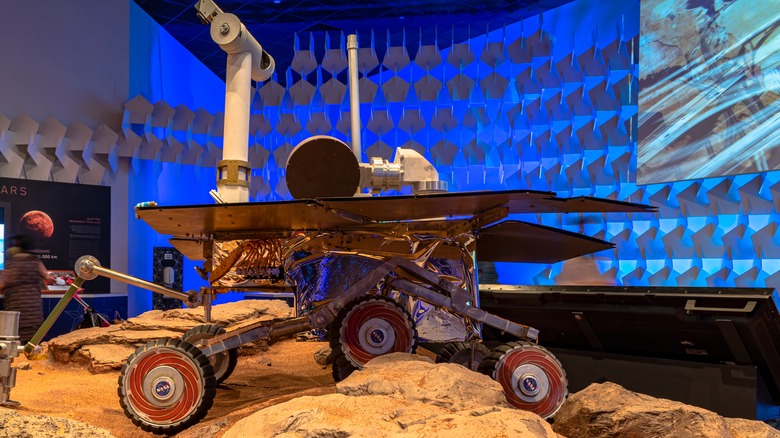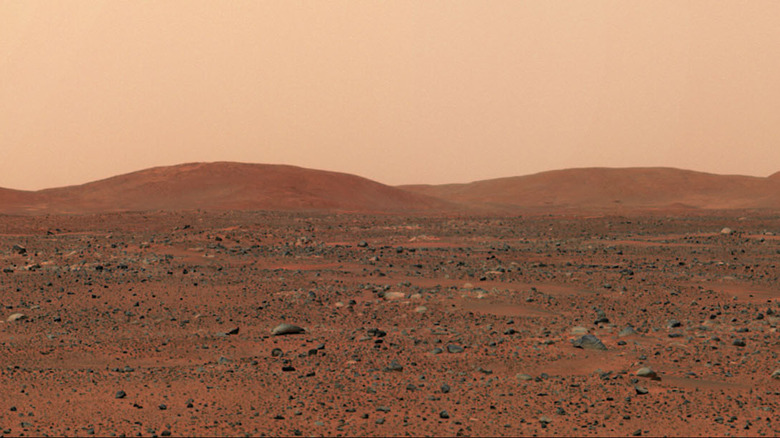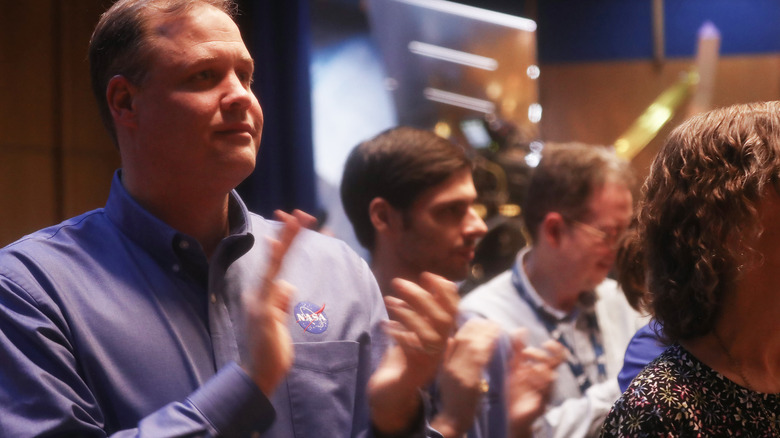The Mars Opportunity Rover Functioned Over A Decade Longer Than Its Mission
With massive temperature fluctuations, wild wind storms that whip fine red dust across the planet, a craggy, uneven landscape, and lower gravity than Earth, the surface of Mars is a fairly inhospitable place for doing research, especially using high-tech robots. Add to that a distance of nearly 57 million miles away from Earth and it seems nearly impossible that NASA was not only able to land the Mars Exploration Rover Opportunity (along with four others over the years) but gather groundbreaking data on the Red Planet, according to NASA Science Space Place.
NASA launched Opportunity in August 2003, a month after its sister rover Spirit, and landed it on Meridiani Planum, a plain near the planet's equator in January 2004. Opportunity had a 90-day mission to look for chemical evidence of water, according to NASA's "On a Mission" podcast. What began as a three-month mission kept going, and going, and going, as the tough little Opportunity rover — about the size of a golf cart and nicknamed "Oppy" — refused to give up.
Months turned into years
Exactly how long did Opportunity last? More than 5,000 days, per NASA. Both rovers had an array of tools for exploring the surface, including cameras, a rock-grinding tool, and a microscopic imager to analyze the dust, rocks, and soil, per Britannica. "We worked on Mars for 14-and-a-half years, and so it became familiar to us," NASA's Jet Propulsion Laboratory scientist John Callas told "On a Mission." "We became Martians because we went to work on Mars every day and we saw the sights — these mountains and these valleys and these craters — and so Mars became our world."
Opportunity discovered hematite "blueberries," BB-sized iron oxide compounds, proving Mars had once, like Earth, had water on its surface, per NASA's Mars Exploration Program. The discovery that the planet may have once had water was important because it meant the possibility that Mars could have harbored life (or still does) and was an important step to determining whether we could one day colonize the Red Planet, according to Space.com and Inverse.
Opportunity stops knocking
How both Opportunity and Spirit survived as long as they did came down to "sturdy construction, creative solutions for operating the rovers, and even a little luck," according to NASA. They constructed their tough bodies of steel and titanium, and they were stable thanks to a lithe suspension system and six wheels that made them hard to tip over. NASA engineers developed several energy-saving methods for extending the lives of the solar-powered rovers, including having them work from a stopped position on north-facing slopes, driving Opportunity from hill to hill to better collect the weak Martian sunlight, and letting them "sleep" at night, per NASA. When Oppy's right front wheel stopped working, the engineers began driving the rover backward.
What's even more incredible was that the rovers' design was "single string," meaning they did not have any redundancies built in. "So if one critical part fails, then that's it," NASA scientist John Callas told "On a Mission." "The mission is over. You know, there's no spare tire, if you will." But during a massive dust storm on June 10, 2018, Opportunity finally stopped communicating with mission control on Earth. Spirit had stopped working on May 25, 2011.
A new documentary, "Good Night Oppy," will be in theaters on November 4 and available on Amazon Prime Video on November 23. The film tells the amazing story of Oppy, per the Los Angeles Times.


